Have you ever heard of activity bags? I am sure you have at this point because the idea is extremely popular with many homeschooling families and bloggers. Just in case you haven't ... be sure to read my review.
As part of the Schoolhouse Review Crew, Activity Bags, LLC graciously sent me two products to review. I volunteered to review their Reading Games in a Bag and Math Games in a Bag from their e-book line and I am so glad that I did! I purchased both of Preschool Activities in a Bag books when Alyssa was a wee little thing and I never regretted it. Then, I attended Sherri's online Send Out Cards workshop and received the Science Experiments in a Bag Book 3: Chemistry for FREE. I definitely need all the help I can get when it comes to science, so ... you can imagine my excitement when I actually had that particular e-book on my computer. I can honestly say that I ABSOLUTELY LOVE all the company's products that I have tried so far. I am hoping to review the Craft Kits in a Bag line in the near future so you'll have to stop by and read that review soon.
Sherri MacLean is the author of the Reading and Math Game e-books and the cover design artist is Kim Sponaugle. Paula Reetz and Beth Simmons proofread the books. Both books contain black and white text and graphics. The Reading and Math Games in a Bag cost $15.00 each and can be purchased separately online. Each game e-book contains assembly instructions, supply lists, lists of items to be put in bag, bag labels, buying tips, and game directions along with any reproducible needed to play the game.
There are several games that contain supplies that will need to be replenished since a few of the items are consumable such as white scrap paper. You can always add a small dry erase board to the bag if easier. I eventually placed a blank white sheet of paper in a thick protector sheet, added a dry eraser marker, and a felt eraser to the bags that required scrap paper so that I wouldn't have to remember to replenish. The "Add It Up" game required scrap paper for addition work. The Roll and Color Games are consumable and will need to be replaced once completed.
Alyssa and I created the games together; it was a fun mother-daughter project! The process of assembling the games provided additional teachable moments. Alyssa folded and cut the white sheets of paper, counted out pieces for math games, and attached the bag labels. When counting out 100 objects for Game Toss, she used a variety of methods to help her keep track of the total. She started off grouping the colored gems in sets of ten on her desk. Then, she skip counted the sets by 10's. As the number got larger she would say, "40 + 30 = 70 (as she pointed to 4 groups and then 3 groups). I have 70 gems and I need 30 more for this game bag." She also counted our the Bingo markers and helped search for household items. We also added real money to the "Stacks of Money" game in addition to the money cards because I like children to feel and see the "real" coins. I had Alyssa exchange the paper coins for real ones after flipping the coins cards over before adding the money together. My daughter was in charge of counting the "real" money out for this game. Real money is not needed; the paper coins work fine. This was just a personal preference and addition to the game. She sorted them into piles, counted the number of coins, and we reviewed a number of money concepts and practiced adding money before playing this game.
 |
| "80 ... Mommy 20 More" |
I printed out the master reading and math game lists which enabled me to track and highlight the games that were already created. I do wish that each book contained a master game checklist with the days of the week across the top. I would like to note which games are chosen during activity game time and which are most often played. However, there was a short list of game titles and a more detailed, alphabetized "Games at a Glance" list of all the reading and math games included for each book. The "Games at a Glance" list provided a short description of the game, supplies needed, the number of masters required, and what page the specific game could be found on in each book.
What Will I Receive?
You will receive an e-book with activities that YOU will assemble for future use. Let me be clear ... you will not receive pre-made activities in actual bags ready to go. The books are a compilation or conglomeration of reproducible activities geared towards children in early elementary grades. As far as I can tell, the most recent books are now offered only as a downloadable e-book containing PDF files.
Helpful Materials for Both Books
- Copy and Cardstock paper
- Ink and Printer
- Containers or Tubs (Assembled Bags Storage)
- Gallon and Sandwich Ziplock Bags with Sliders or Large Manila Envelopes
- Double-Sided Tape, Packing Tape, or Any Other Adhesive (Bag Labels)
- Thick Sheet Protectors (Optional)
- Laminate or Contact Paper (Optional)
- Household and Store Bought Items (Varies with Each Game)
- Dry Eraser Markers
- Felt
- Paper Lunch Bags
- Dice and Deck of Cards (Dollar Tree)
- Game Markers or Pennies
Now that I have told you a few things the two game e-books have in common. Let me further describe each book separately.
Reading Games in a Bag- Word Recognition
- Sight Words
- Alphabetizing (Sequential Order)
- Syllabication
- Left to Right Print Eye Tracking
- Letter Sounds
- Sentence Segmentation and Formation
- Reversals
- Memorization
- Vocabulary Development
- Labeling
- Body Awareness and more.
The screenshot below shows the reading game titles within this book. Click to enlarge the photo. Outstanding list!
How We Used Reading Games in a Bag
I used the Reading Game Book in conjunction with her reading and spelling curricula. I chose several games that correlated with what we are currently studying in language arts. Many of the games were used to review previously learned concepts. I did not print out all of the games from this book. We already have many high frequency (sight word) games of similar nature that I skipped printing which includes Bingo, Flash Cards, and Sight Words. These popular sight words games are worth printing out. We also did not use the easiest activities such as Body Cards, Label It, and Label the Picture because we did very similar games when Alyssa was a lot younger. Those activities seem more appropriate for the early readers. I used the reading games during her agenda time or activity game time. She was allowed to choose a handful of games to play during activity time including those from her current language arts curriculum or from the Reading Games in a Bag tub. She was able to chose one to three games from the Reading Games in a Bag tub per day. We also played several games during Friday's family game night and a few right before bedtime. The reading games were also used as brain busters from regularly scheduled subjects, during break time, or when I was completing chores.
How We Used Reading Games in a Bag
I used the Reading Game Book in conjunction with her reading and spelling curricula. I chose several games that correlated with what we are currently studying in language arts. Many of the games were used to review previously learned concepts. I did not print out all of the games from this book. We already have many high frequency (sight word) games of similar nature that I skipped printing which includes Bingo, Flash Cards, and Sight Words. These popular sight words games are worth printing out. We also did not use the easiest activities such as Body Cards, Label It, and Label the Picture because we did very similar games when Alyssa was a lot younger. Those activities seem more appropriate for the early readers. I used the reading games during her agenda time or activity game time. She was allowed to choose a handful of games to play during activity time including those from her current language arts curriculum or from the Reading Games in a Bag tub. She was able to chose one to three games from the Reading Games in a Bag tub per day. We also played several games during Friday's family game night and a few right before bedtime. The reading games were also used as brain busters from regularly scheduled subjects, during break time, or when I was completing chores.
Reading Game Experiences
Her favorite reading games were Climb the Ladder, Syllables, Concentration, State Abbreviations, Find the Sound, and Sound Trail. The one thing that I noticed was that she was a little confused at times when playing the "Find the Sound" game. She kept thinking about the correct spelling of the word and not listening to the letter sounds. She can read and spell well and is also aware of many of the spelling rules. For example, say the word "pipe" aloud. If you think about the spelling of a word there is a silent "e" at the end of the word, therefore some children may mistakenly assume the /p/ is at the beginning and middle when in fact the /p/ sound is at the beginning and the end of this word. A quick reminder to focus on the letter sounds was the obvious solution to the problem. I told her not to think about the spelling for this game just to listen to the sounds. Here are a few shots of the games we played together. Remember to click on photos to enlarge if necessary.
State Abbreviations Game
 |
| She got KS correct - let the dancing begin! |
Sight Word Concentration
This game is played like an other sight word concentration game. We also played this game using both sets (all cards) to make it more challenging for my daughter. Each set of cards was printed on different color cardstock paper which made it easy to choose cards when using both sets. I also required her to spell the sight word while not looking at it in order to keep the cards that matched.
Syllables Game
The parent could easily create additional syllable word cards. The child could also copy the word on a whiteboard and show swoops underneath or slashes to indicate the number of syllables after clapping it out.
Hard C Soft C
This was a great review game for our spelling curriculum which teaches spelling rules. Also used the game board to practice counting by 10's at the end of the game. She sorted the game cards into two piles (hard c and soft c) and discussed the spelling rule that applied to this game.
Sound Trail
I required Alyssa to tell me all the sounds for "ch" and several other letters so that she could review her letter sounds learned using her spelling curriculum. We used the pennies as game pieces this time, however any marker or game token can be used with this game including seasonal items. This tends to make the children even more interested in the games.
I substituted several household items with seasonal replacements for added fun. For example, instead of using the Dixie cups and popcorn kernels for the "Find the Sound"game which is still appropriate for a fall theme; I used pumpkin containers and pumpkin seeds as replacements since Halloween was around the corner and we were working on our pumpkin unit. We also extended this game by having her skip count the number of seeds in each pumpkin container. Then, she compared the amounts in each container. She told me which had the most and least amount of seeds. Furthermore, we added the three container totals for a seed sum. I also substituted the pennies for Halloween erasers in several games.
Find the Sound Game
 |
| Emphasize that you want to know where the letter sounds are and not the spellings. |
Climb the Ladder
Another thing I must note is the that "Climb the Ladder" game works best if an adult is not playing with a child that can also read fluently. She said, "Hey ... we both keep going up the ladder at the same time." Basically we were both reading fluently and taking turns climbing up the ladder. This game would work best for two children rather than an adult and child. Of course, the adult can always incorrectly read a card asking the child for assistance in reading it correctly. The choice is yours. |
| The pennies were too big for the thin boxes so I used popcorn kernels as game tokens. |
Math Games in a Bag
The Math Games in a Bag e-book contains 33 elementary math games that I believe are suitable for children grades K-3. The e-book files are available and downloadable as 201 pages in PDF format. The majority of the games require two or more players. There are several games that could be used with preschool children that are no longer placing items in their mouths such as Match Em Up, Memory Math, Roll and Cover, Number Writing, and Shape Bingo. Furthermore, several games seemed more appropriate for 2nd grade and up including Menu Math, Multiply and Conquer, and all five of the Trickster Problems; therefore Alyssa and I did not print or attempt these games yet. As with all games it really depends on the ability of your children and how you adapt each game. This is a wonderful hands-on way to reinforce mathematical concepts and critical thinking skills.Concepts and Skills Covered
- Place Value
- Single and Double Digit Addition and Subtraction
- Fact Families
- Number Comparisons (Greater Than Less Than)
- Multiplication and Division
- Money
- Number recognition and Number Formation
- Budgeting
- Shapes
- Telling Time
- Word Problems
- Memorization and more.
I used the math game e-book in conjunction with her math curriculum in order to review previously learned concepts or to reinforce concepts from a day's lesson. I used it as a supplement in many cases to cover topics that were not thoroughly covered or even touched in her current math curriculum. I mainly chose addition and subtraction games for fact fluency but we ended up creating many of the games. Alyssa's math curriculum is based on mastery and this year her focus is addition and subtraction. We definitely preferred the math game book over the reading game book, but only because the games were more challenging. The games within this book challenged her at times and kept her attentive. I also used these games as math centers introducing and using 3-5 higher order concept games per week. These were the games that challenged her the most. Alyssa and I played each game at different stations in the house for a minimum of 30-45 minutes after completing math lessons. I made sure she understood the directions and I modeled the game before introducing a new game to her on the same day. If there was any time leftover, then I let her choose another game or two to play. We did math games in a similar fashion when I taught 2nd grade. This can be applied and done in the homeschool environment too. The children can rotate through the games or if you have an only child like I do then the parent must participate. Additionally, the math games were played before bedtime, as a break from scheduled subjects, during our 2 hour Friday game night, and at times upon waking up. Several of the math games snuck into her reading activity time too. I would also like to get a small group together for a math game night using the games from this book. I want my daughter to play games with children her age and not just with me.
Math Game Experiences
How Many Dots?
Math Game Experiences
Her favorite math games were Add It Up, Bead Bingo, How Many Dots, Math Bingo, Dot to Dots, Stacks of Money, Math Blocks, Great or Small, and Game Toss. Well, I should just list all of the games we printed but I won't. She enjoyed playing every math game to a great extent. This book was our favorite and I really hope another math game book is in the works soon. I think we are both addicted to math games. I will be introducing a more difficult multiplication game bag to her this weekend with a few adaptations. I hope to post about it on my blog so check back soon. We almost always extended the games by adding additional activities or concepts.
Add It Up
Bead Bingo (Gem Bingo)
Players take turns solving addition and subtraction problems. All players cover the number on their board after the player solves the problem. This game can also be used independently as a way to assess mathematical skills. We used gems instead of beads. Company encourages material substitutions as long as the game is not compromised in any way. The gems did not compromise the game. If bingo was called, then we extended the activity by having Alyssa announce her numbers and attempt to spell the number words aloud. She decided that before cleaning up the game, she wanted to sort the problems into two piles addition and subtraction problems. She also sorted the gems by color which can be done using the beads as well. You can play other games besides coverall or those in a row. I used to go to the bingo hall with my mother when I was younger. They play all sorts of creative and inventive games such as covering numbers around the perimeter, create a letter "T," "X," "L," or "H," and also covering all four corners. These types of games also reveal math concepts that can be introduced or reviewed.
Add It Up
This game is played in a similar way to addition war. Each player flips over two cards to add together. The person with the highest number collects all the cards. Scrap paper is provided for those that need to solve the addition problem on paper. Alyssa solved most of the problems mentally and the paper was not necessary. We used the paper to write the number totals and she circled the largest number which indicated who would collect all four of the cards. We also eliminated the face cards and flipped three cards over to add. This game can be easily adapted by varying the number of cards the children are required to add. You could also change the game by having the lowest sum collect the cards.
Math Bingo
This is a regular math bingo game. There is no need to print the blue markers if you have bingo counters of any kind. We also used seasonal erasers, gems, candy, and so forth to cover the numbers announced. Another way to adapt this game is to call out the numbers using place value terminology. For example, when the number card 18 is pulled the caller would say "one ten and eight units." This game consists of several differentiated boards including a board using single digits, teens, and other double digits. You can always add higher numbers as the child progresses. I would have liked a blank bingo template to be included as one of the book reproducibles, but that can easily be found online if you chose to extend the learning for older or advanced students.
She actually attacked her father playfully because he won!
|
Number Line Game
On another note, we were both a little confused while playing the Number Line Activity. I may have over analyzed the game resulting in confusion. We weren't sure if an exact number of 0 or 20 was needed to win the game. In our game the first player that passed the 0 or 20 number on the line was the winner. Otherwise, the game could get horribly long and the child will be exposed to positive and negative numbers. This game also combines skills such as number recognition, counting, and the concept of odd and even. Alyssa sorted the number cards at the end of the game into two piles (odd and even numbers). She sang an odd and even song. She also used counters to figure out what the sum of all the odd numbers would be if she added them together. The same process was followed using a variety of addition strategies to figure out the sum of all even numbers. I never stop her from completing the exercises that she creates because I like to see how her mind works and what she learns.
I appreciate it when a game combines two skills at once such as the "What Time Is It" game. The child works on addition skills while he or she practices telling time. The "How Many Dots" and "Game Toss" games challenge children to use a variety of strategies to add the dots or points including skip counting, repeated addition, multiplying, adding totals, or the child can simply count the dots. This makes it easy to differentiate the game based on the concept your child is currently studying. The "Math Blocks" game can be extended by asking the child to write the expanded form of the number. You can even have two players compare their numbers and the largest number wins a counter or Popsicle stick. The game can end when ten numbers have been built, read, and expanded properly or when a player has ten counters. "The Stacks of Money" game combines addition, sorting, adding money, and comparing amounts in one game. In the photos below, you will see another example of one of the games covering two or more concepts simultaneously.
How Many Dots?
 |
| First, she decided to count by 5's and then by 3's. Last of all, she added the two totals together. |
Organization and Storage
We stored our activity bags in two separate labeled containers or tubs for easy access. I did not add blank cardstock pages to make the bags sturdy. One tub was labeled Math Games and the other was labeled Reading Games. You may find it easier to store them in a large binder with zippered pouches or zippered bags to store the game pieces and writing utensils. Here is a photo of a few of our bags in the beginning. The tubs are getting full now.
Coordinator's Handbook
The Reading and Math Game books DO NOT contain the coordinator's handbook for coordinating a swap, so if you are interested in organizing an activity swap with a group of friends or fellow homeschooling families, then make sure you download the FREE Coordinator's handbook. I chose not to participate in or coordinate a swap. The Coordinator's Handbook is currently available as a FREE product on the Activities in a Bag website. Add the item to your cart by clicking the "Add to Cart" button above the word "Sample." This handbook will explain every detail of how to coordinate an activity bag swap. Click the link that follows, if you would like to read an in-depth explanation about the organization of an activity bags swap. The coordinator's handbook as mentioned above is NOT in the Reading or Math Games in a Bag e-books so make sure you download and save it in safe place. Basically a group of homeschool families or parents commit as a group to create the bags together. The coordinator will give each parent one activity to complete with assembly instructions and reproducibles. Each parent will make the same bag for each participant. For example, a certain mom (let's call her Dorothy) is responsible for game number 3. She will make the same game (#3) 20 times if twenty individuals participate in the swap. This means that each participant leaves with twenty different games to use with their children. Sounds like fun doesn't it? They have posted several swap photos on the website - go take a peek! Don't worry ... if you would rather not participate in a swap, the games can be created by YOU. I haven't ever joined an activity swap, because I prefer to do the work myself the way I would like even though an activity swap does sound like loads of fun with fellowship opportunities. I may need to consider coordinating or participating in a swap in the future. As of now, my schedule is pretty full.
Pros
A friend recently asked me (not her exact words), "Why would someone purchase this product if there are plenty of free and similar ideas available online?" The question caught be off guard that day so I responded in a very general way. I will address this again and also mention several other advantages for purchasing the game books through this company:
- I feel it is important to support companies that create curricula or other materials geared more for homeschooling families. This is a Christian company founded by two homeschooling moms. I would want the support of fellow homeschooling families if I had a business.
- The cost is very reasonable for an e-book that contains an assortment of games that can be used throughout the homeschool day. This leads me to another point ... why spend so much time researching when the work has already been done for me. The reproducible pages are readily available as soon as I am prepared to create the bags. The time spent researching can be time spent teaching or playing with children. I search mainly after hours when everyone is sleeping so if this saves me one extra night's sleep - AMEN! I will be more alert the next day with a full night's sleep.
- Many similar games that I find online tend to be colorful and use a lot of ink. Activity Bags, LLC created reading and math games using black and white text and graphics to limit the cost of ink. Although the game books cover some of the same concepts found in free materials, you are bound to find several fresh ideas with a twist to try. I have also noticed that the quality of some of the free games is not comparable to those purchased from Activity Bags.
- The book is well organized with an easily read font. I love the fact that the reproducible pages follow the assembly and game instructions. They are not found at the back of the book like most file folder game books I have purchased in the past; the printables are located next to the actual game to be created.
- You have the ability to pick and choose what games you want to create. You do not have to print out and use every single game. It is a book of options that are readily available to meet your needs at any time.
- The portable games are contained in one Ziplock bag making it easy for you to travel places with them and also making them accessible and convenient. Reading and Math Games in a Bag can be used during wait times at restaurants, theaters, doctor offices, during travel trips, or as summer and winter break supplements to your curricula. These games can also be used by a caregiver including babysitters. I plan to use several games this Friday when we go to Magik Theater. We always get there an hour ahead of time and these games will surely help kill the waiting time. I have a feeling several onlookers may want to join in on the fun too! I will be sure to pass on the company name!
- The games can be used with multiple children within the same age range. The children can play the games together once the game is modeled by a parent or teacher.
- The time spent creating the games and prep work involved may be overwhelming for some homeschooling moms at first. I actually really enjoyed making the game bags with my daughter. It also felt like we created the games faster the more games we assembled together. Creating the games may be considered a time consuming project due to the amount of prep work, but I believe the work and effort is worth it in the end. You can always have older children create the games for the younger children, participate in a swap to save time, or have the child work with you in order to create the games as I have done.
- The directions were clear for most if not all of the games that we used. However, there was one bag where the directions were not 100% clear and may require further explanation. For example, the Number Line game did not state whether or not a child must end on exactly a 20 or 0. When we attempted this game, we learned to stop if a child passed the numbers 0 or 20 and the exact number was NOT necessary. However, if you would like to make the game more challenging for advanced or older children you could state in the rules that the exact numbers must be the target number. The children will then be calculating totals with negative and positive numbers. The game may last a lot longer than expected if you choose this route. We also added a pumpkin seed as a game marker to track our location on the number line. This was not mentioned in the directions.
- The Reading and Math game e-books use a lot of ink and paper even though there aren't any colorful graphics or text. The company does try to reduce the cost by creating black and white materials since color ink is so expensive - this is stated in the book. There are still a handful of reproducibles that must be printed to play each game. Keep in mind ... you can print the entire e-book or just a few games. The choice is yours! I chose to print and use as MANY of the games as possible and I will create more as she progresses.
- Many of the paper pieces are small such as math unit blocks, sentence words, and sight words. I do recommend laminating them when possible even though it can be costly depending on the avenue taken. I did not have the funds to purchase my laminate refill so I decided not to laminate the games this time. I have the masters so I can always reprint and laminate a game at a later time that gets used more often. Alyssa handles materials well that are not laminated so I didn't worry about this aspect. However, I highly recommend laminating game materials especially those with smaller pieces or if your children are younger. They will be more durable and last longer if you can laminate them. Contact paper is an alternative, however, I haven't ever had luck with it so I steer clear of it.
Overall Thoughts
The company, Activity Bags LLC, never ceases to amaze me! They always offer high quality inexpensive products well worth the money spent. The game books would not be considered a complete curriculum but they can be a supplemental tool for any reading and math curriculum. Alyssa had a lot of fun playing the child-centered, hands-on educational games that taught relevant and meaningful skills for both reading and math. She seemed very interested in trying the games since she participated in the assembling the activity bags. She took pride in her work and handled the games gently with care. Unfortunately, we did not laminate the games due to expenses and the fact that I wanted to immediately get started since this was a short review period. Alyssa asked to do the games from both books even when they weren't assigned or required activities and not once did she complain. Often, if we had time before bed, she would ask to play, "Just one more quick game." I was grateful for and impressed with the creative variety and number of activities available to choose from in one book. Repetitive play and exposure to the same game will build the her confidence level and help solidify the learning of the concepts presented. I am one VERY content reviewer! The games will become a permanent addition to our homeschool day and I am sure they will be a blessing to any home or school! I enjoy being actively involved in Alyssa's learning and participating in the games.
The game books motivated and encouraged my daughter to think compassionately about others in need. We have discussed in present time and in the past how blessed she is to have love, family, food, shelter, clothes, school curricula, games, toys, and more. She told me the other day, "My heart told me to make these bags for the children around the world that don't have them." I swear I just wanted to bawl - a magnificent conversation followed. Alyssa made the decision to start her own project using the ideas presented in the Activity Bags books. She created several gift bags for her Operation Christmas Child Shoeboxes. She also made several preschool bags for a friend. We just need to contact the company to make sure we have permission to create and send the bags as gifts to others. We definitely don't want to violate any copyright laws. The copyright states that the book is limited to your personal use. She will pretend plays school with her dolls and teach them how to do the activities until I contact the company.
Future Project Suggestions
I would love to see more games and activities in a bag created! Here are a few of my suggestions for future company projects that I hope will be considered. What suggestions would you give the authors? Is there anything you wish was available on the market today? What games or activities would help you during your homeschool day? Please share in the comments section.
- Bible Activities, Games, Crafts in a Bag (including people, stories or events, etc.)
- Geography Games and/or Mapping Activities in a Bag
- Reading Comprehension Strategies in a Bag
- Grammar Games in a Bag (parts of speech, capitalization, and punctuation games)
- Phonemic Awareness Activities in Bag
- Critical Thinking Activities in a Bag
- History Games and Activities in a Bag (people, events, timelines, etc.)
- Graphing and Data Analysis Activities in a Bag (household items, candy, or cereal)
- Math Dice Games in a Bag
- Math Card Games in a Bag
- Math Journals (K-2 Labels printed for one child or multiple children)
- Step-by-Step Drawing Activities in a Bag
- Music and/or Composer Games and/or Activities in a Bag
- Additional Reading and Math Games in a Bag Books
- Thematic Units in a Bag (One theme or topic across several subjects all placed in individual bags)
- Create a Master Game Checklists with the Days of the Week Across the Top
- Blank Master Templates for Bingo, Word Strips, and So Forth (Enables the user to be creative and add on to the games provided in the books)
Recommendations
I highly recommend Reading and Math Games in a Bag to ALL homeschooling families, parent groups, family enrichment classes, co-op groups or directors. They could also be used during children's church or Sunday School. These game books could definitely be used by elementary classroom teachers at any type of school during center time, game time, and work stations. There are many schools that offer after school math clubs; the math game books could be implemented at that time too. These games could easily be utilized at after school care facilities and even with other caregivers including babysitters. The game e-books are fantastic resources for homeschooling individuals that use the workbox system. I added a few to Alyssa's workboxes this month and plan to add more games in the future. I spoke with a preschool teacher the other night and told her about the preschool books. She was thrilled to hear about a product that she could include in her school day.
Other Products Available
- Are you heading out of town on a long trip and need activities to keep your child or children busy as you travel? Then, the Travel Activities in a Binder available for $15.00 may be the answer for you.
- Do you have a toddler or preschooler you would like to productively occupy with meaningful activities as you work with older children? If so, check out the Preschool Activities in a Bag 1 or Preschool Activities in a Bag 2 for $15.00 each or they are available together as a bundle for $27.00. Book 3 is coming soon.
- Do you want your child to practice writing and grammar skills? The Daily Activity Journals 1 and Daily Activity Journals 2 are suitable for children in 2nd through 7th grade. A single e-book can be purchased for $15.00 or both for $27.00.
- Do you wonder how you will fit science into your day or do you need a supplement chocked full of experiments that can be used in conjunction with your K-8th grade science curriculum? You can even dedicate one night to do science experiments. Visit their website to read about Science Activities in a Bag E-Books 1, 2, and 3. Each book is available separately for $15.00 or as a bundle of three for $39.00. You can also buy the first two Science E-Books in a Bag for $27.00.
- Yep ... and there's more, click the following link to read about updates and other products coming soon. You won't want to miss them!
If you would like to place an order of if you have any unanswered questions about Activity Bags, please contact the company here. They can be reached at 303-288-0948. Be sure to read through the FAQ's on the website to familiarize with the concept of activity bags and game books. If you would like to subscribe to the Activity Bags mailing list please click here . You will receive a sampler of activities including 7 Preschool Activities in a Bag, 3 Science Experiments in a Bag, and a 30-Day Challenge Devotional and Journal Page after competing a short survey. This alone is a helpful resource for any homeschooling family. You will definitely want to join the Activities in a Bag Forum Yahoo Group for updates, freebies, and discussions about activity bags. Paula Reetz has several preschool articles that may be of interest to those of you with preschool aged children.
Thank you Activity Bags and Schoolhouse Crew Leaders for the opportunity to review these stupendous books!
Please visit the Schoolhouse Review Crew Blog here to read other Activity Bag reviews. There will be a variety of resources reviewed covering several different subjects. Be sure to click on as many links as possible to read about their experiences with each book.















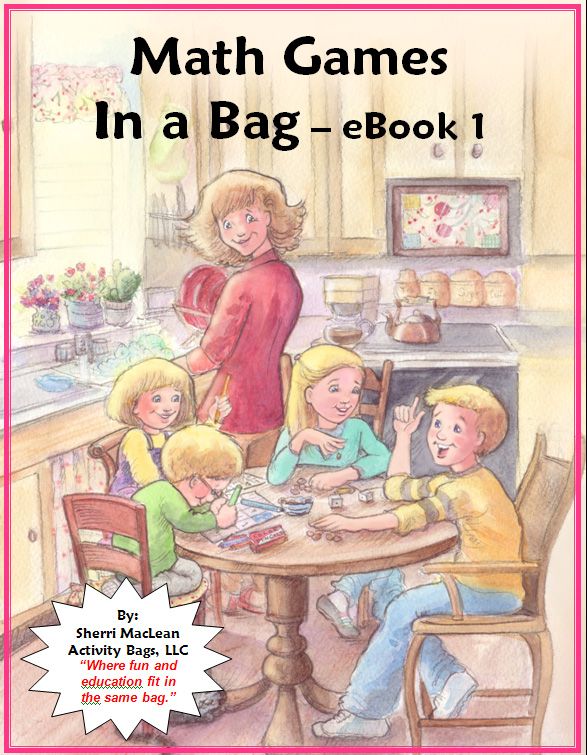











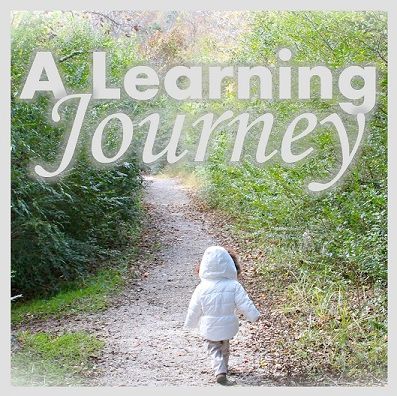






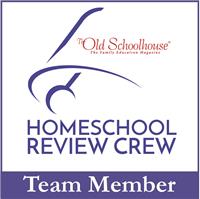






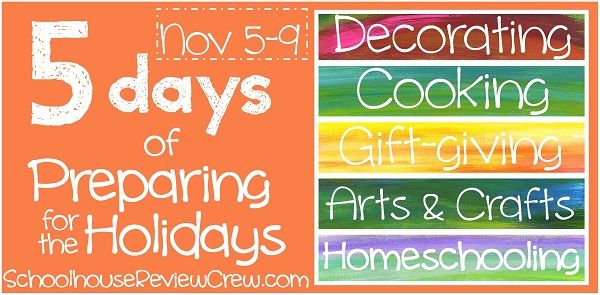
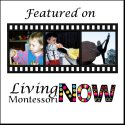


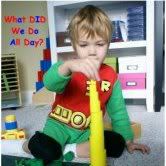



I really appreciate your very thorough review! I had questions the website did not answer but you answered them all! Off to purchase that math book right now :)
ReplyDeleteGreetings,
ReplyDeleteThank you so much for the wonderful review of the Activities in a Bag products. So far, you have had the best review out of the 100 bloggers.
Would it be okay if I used some of your amazing pictures on our website?? I would give credit to your blog of course, but wanted to ask first.
Thanks for considering,
Sherri MacLean
www.ActivitBags.com
info@ActivityBags.com